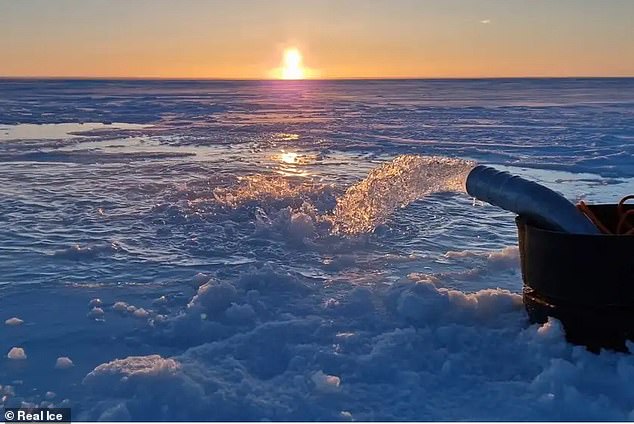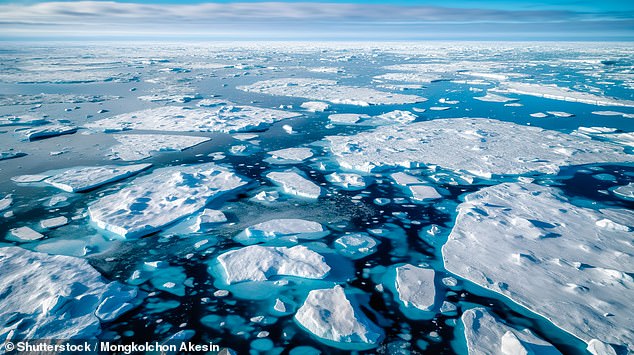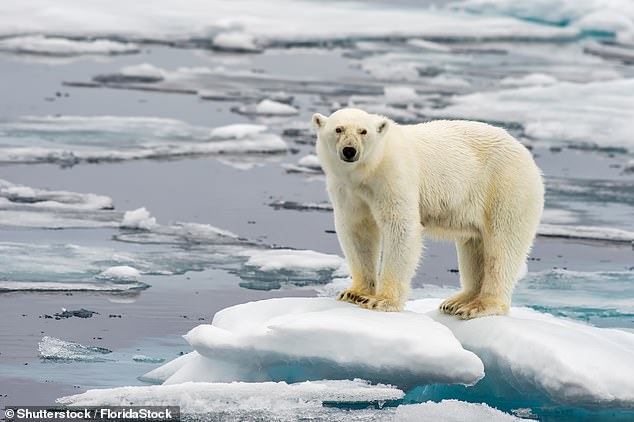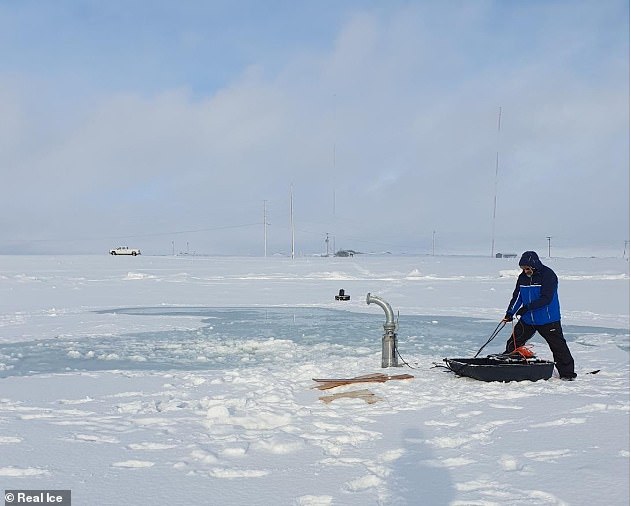Scientists Plan to REFREEZE the Arctic to Combat Climate Change – Here’s How
- READ MORE: Scientists Warn That Earth's Glaciers Are Doomed and Won’t Survive Past This Century
When it comes to curbing climate change , scientists will attempt nearly every possibility.
And experts at the University of Cambridge They are no exception – having received financing to investigate whether global warming might be mitigated by rejuvenating the ice cover in the Arctic.
A group will investigate if the quickly shrinking sea ice in the Arctic might be artificially increased by spraying seawater onto its surface during winter.
If effective, this could lessen summer melting and curb local temperature increases, they noted.
For many years, scientists have been raising concerns about the quickly diminishing sea ice in the Arctic.
Many expect the region to be ice-free in the summer in the 2030s, even if sharp cuts to emissions are made immediately.
Certain experts believe that the sole method to prevent this issue is by intentionally thickening the ice artificially – an essential resource for both polar wildlife and Inuit communities.
However, precisely how would it function?



Sea ice develops when water freezes underneath an existing layer of floating ice on the ocean's surface.
As the ice expands, it forms a more substantial insulation layer, separating the frigid Arctic air above from the water beneath, which causes the pace of freezing to decelerate.
Any snow covering the ice's surface serves as insulation, thereby further decreasing the speed at which new ice forms.
One technique that The University of Cambridge's Center for Climate Repair is examining what is known as surface thickening.
The objective here is to enhance the sea ice thickness immediately whenever there is no snow cover by pumping seawater onto the surface. This way, the water is directly subjected to the cold air, allowing the ice to thicken from the top down.
Another method can be used when there is snow on the surface of the ice. It involves filling the voids of air within snow with seawater – eventually turning the snow into solid ice which then leads to more natural freezing at the ice’s base.
Field trials are set to begin in Canada this year in collaboration with Real Ice, whose mission is to ‘preserve and restore Arctic Sea Ice’.
The firm stated last year that previous testing confirmed the concept, as a trial borehole caused the ice shelf to thicken by 50 centimeters at the target location when compared to a control area from January through May.


Importantly, the findings indicate that the method stimulated 25 centimeters of natural ice expansion underneath the ice shelf.
The technique was initially introduced by Steven Desch from Arizona State University along with his team in 2016.
They calculated that covering 10 percent of the Arctic with thicker ice could potentially undo the recent losses in sea ice in the area.
"Our aim is to show that increasing ice thickness can effectively help in both maintaining and revitalizing Arctic sea ice," Andrea Ceccolini from Real Ice stated earlier. New Scientist .
‘Every action we can take to make the ice last longer during the summer will give us extra weeks of solar radiation reflection back to space, which is less energy absorbed by the planet.’
The scheme is one of 21 geo-engineering projects that will receive a total of £57 million in UK taxpayer money to assess a range of controversial techniques to curb the effects of global warming.
The financial support originates from the government’s Advanced Research and Invention Agency, known as ARIA.
Read more
Post a Comment for "Scientists Plan to REFREEZE the Arctic to Combat Climate Change – Here’s How"